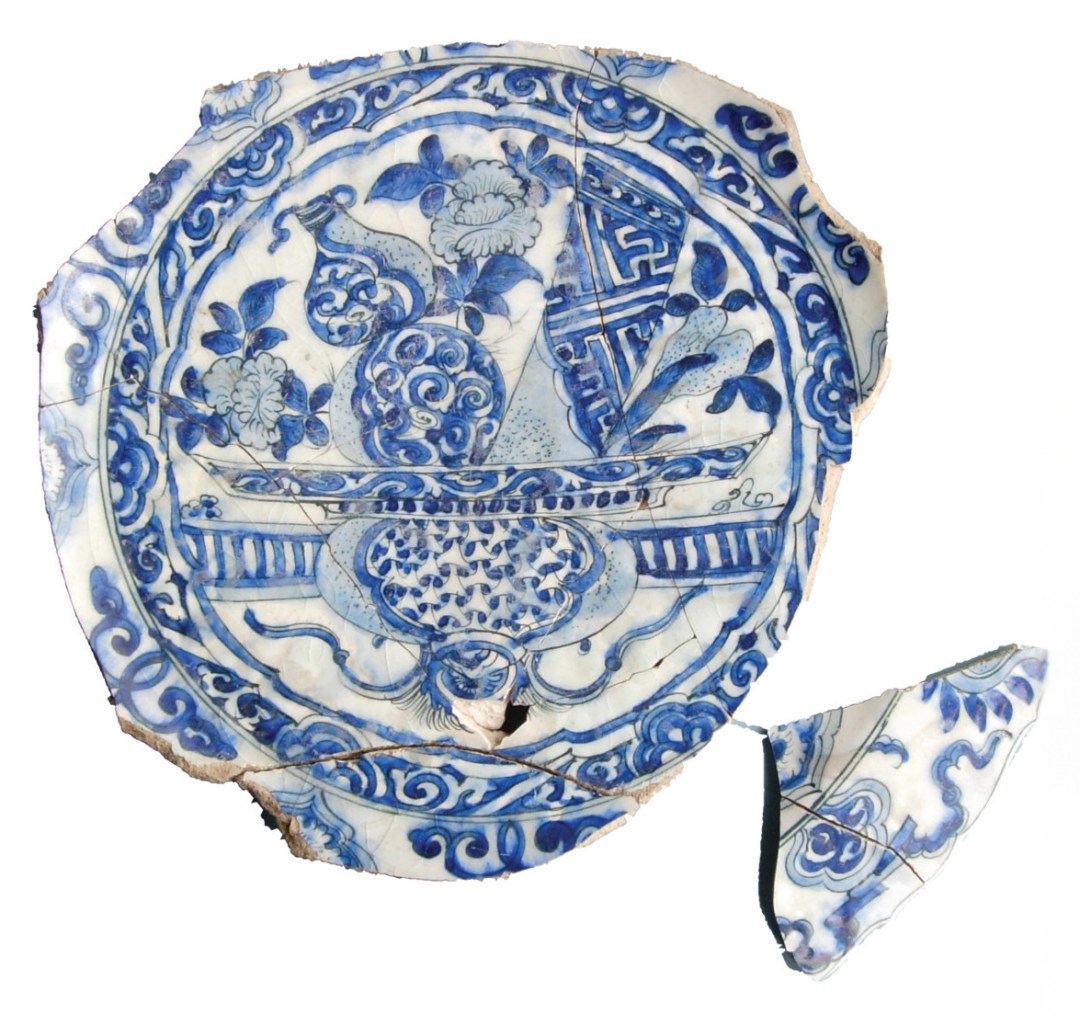Persian blue-black ware porcelain dish with Chinoiserie design.

One of the most remarkable finds from the excavation came from a relatively shallow rectangular pit interpreted as a horticultural bed. Among the small pottery assemblage was a near-complete large Persian dish (460mm in diameter) made in porcelain, although more accurately it should be termed a soft paste stoneware. It is a ‘two blues-black-and-white’ decorated dish with a scallop rim, a very rare import for this period. The vessel did not derive from one of the major Persian production centres, but was made in a provincial kiln site in the Kirman region of southern Iran. The decoration derives from Chinese examples; the design is outlined in black (chromite) with two shades of blue used to infill. The central design consists of an adaptation of the ‘flower basket on the table’ theme, with an over-extended rim with the base of the vase motif having the symbol for cash, from which black roots are growing, a peculiarity of Persian decoration. The top of the vase contains ‘auspicious symbols’: a scroll or drum and double gourd porcelain bottle. The rim has highly derivative Chinese peach symbols and a wave scroll on the wall of the dish. The exterior is decorated with a running foliate design with insects and the underside of the dish has an illegible black painted rectangular mark, which has blurred during firing. The glaze is underfired, having a bubbly appearance. This vessel dates to c. 1660-70.

